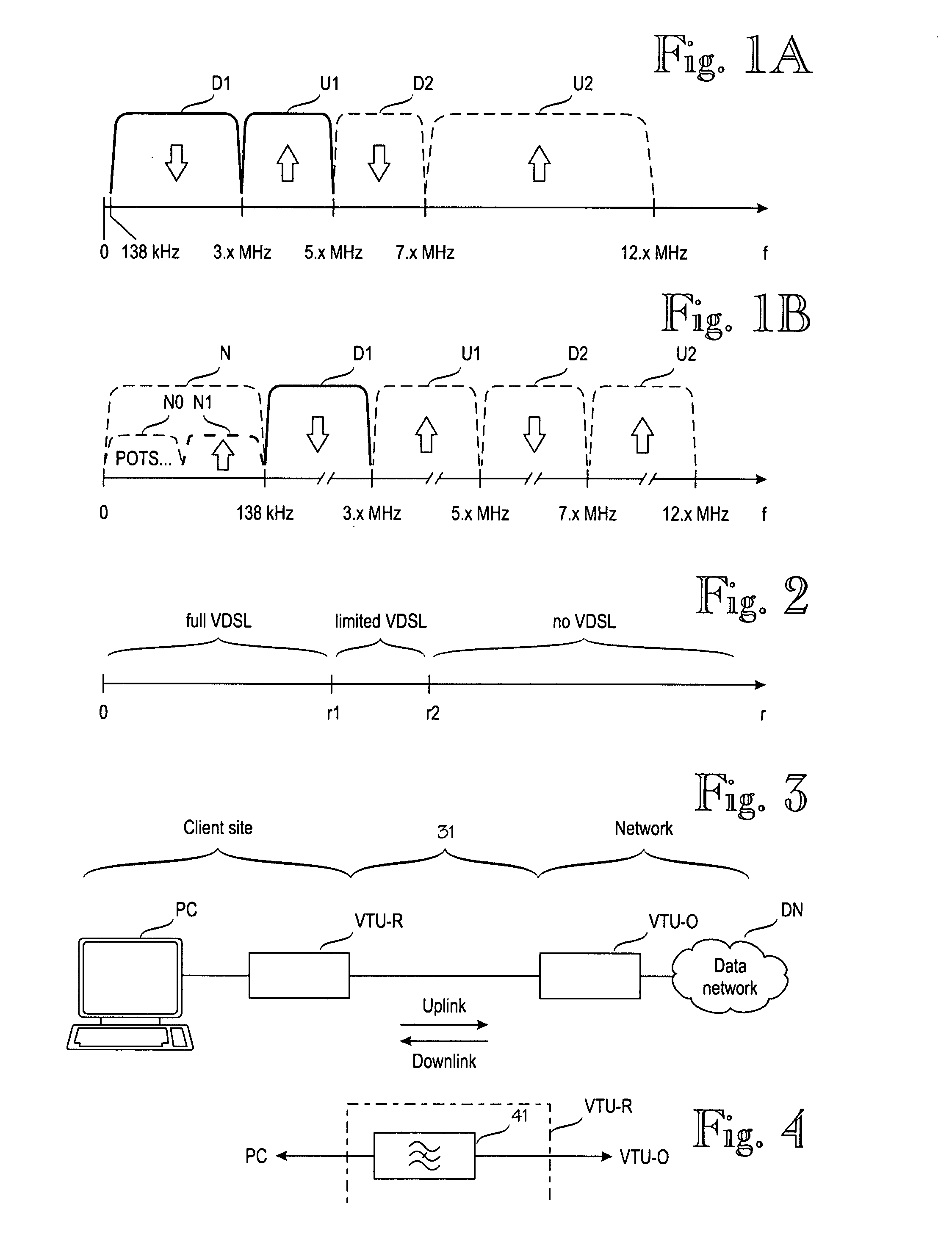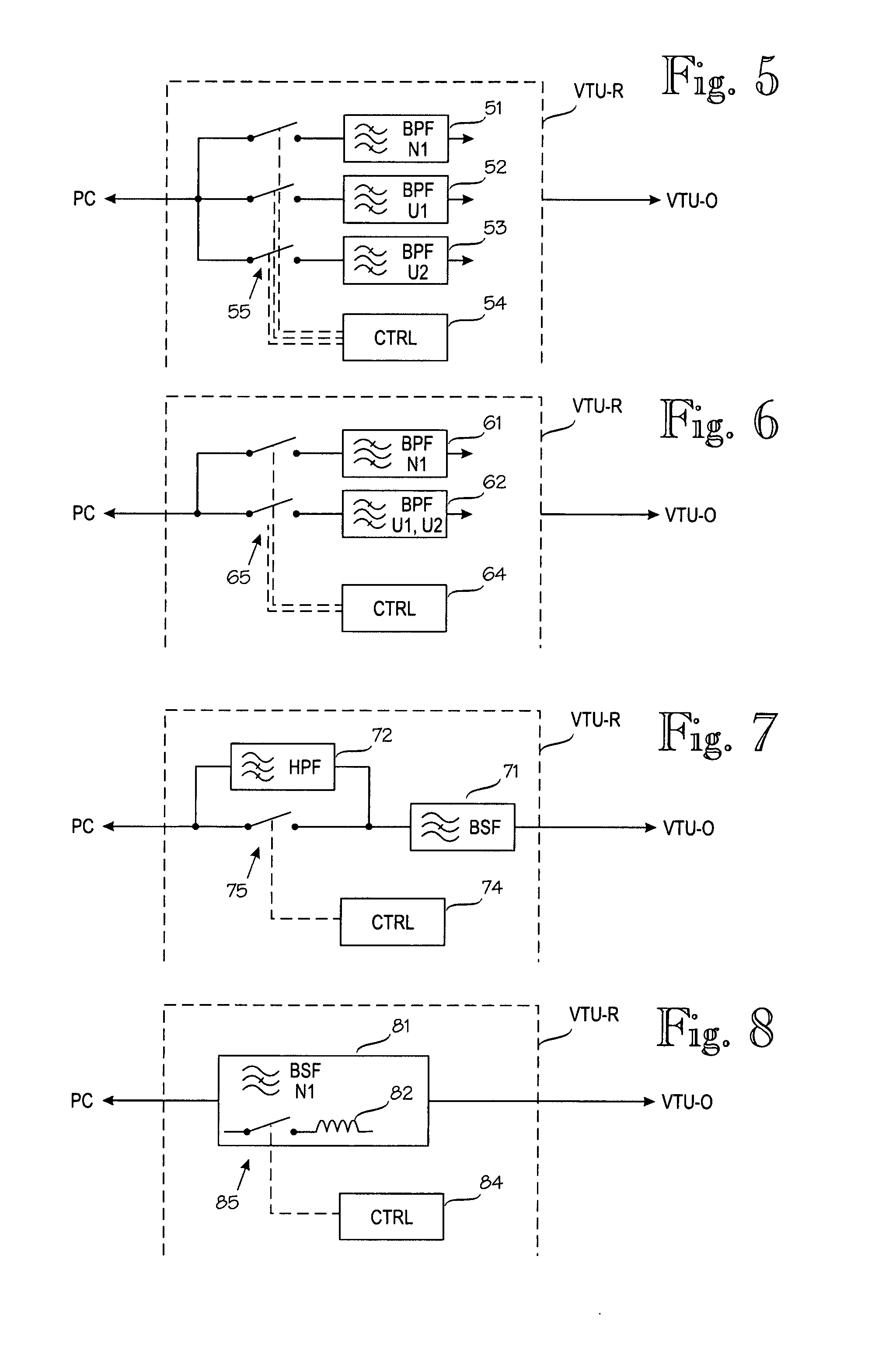Method and apparatus for digital subscriber line transfer
a technology of digital subscriber line and transmission method, applied in the direction of electrical apparatus, digital transmission, signal channel, etc., can solve the problems of preventing the use of vdsl technology, and achieve the effect of reducing costs and complexities, and reducing uplink capacity
- Summary
- Abstract
- Description
- Claims
- Application Information
AI Technical Summary
Benefits of technology
Problems solved by technology
Method used
Image
Examples
Embodiment Construction
[0023]FIG. 1B illustrates the frequency bands used by a transceiver unit according to the invention. Note that in FIG. 1A the frequency axis f was drawn to scale, whereas in FIG. 1B, the lower end of the frequency spectrum is very much exaggerated. In FIG. 1 B, reference sign N denotes a frequency band allocated to non-VDSL use by current VDSL standards. For example, the non-VDSL band N comprises frequencies used by conventional telephony, or POTS, signals. These frequencies are denoted by reference sign N0. According to the invention, a transceiver unit is capable of using a part of the non-VDSL band N for uplink use, at least in a situation where no other uplink bands are usable. In FIG. 1B, such an uplink band that is currently allocated to non-VDSL use is denoted by reference sign N1. Again, bold outlines show frequency bands that are actually available. In the situation illustrated by FIG. 1B, none of the standardized VDSL uplink bands U1 or U2 are available. The non-VDSL uplin...
PUM
 Login to View More
Login to View More Abstract
Description
Claims
Application Information
 Login to View More
Login to View More - R&D
- Intellectual Property
- Life Sciences
- Materials
- Tech Scout
- Unparalleled Data Quality
- Higher Quality Content
- 60% Fewer Hallucinations
Browse by: Latest US Patents, China's latest patents, Technical Efficacy Thesaurus, Application Domain, Technology Topic, Popular Technical Reports.
© 2025 PatSnap. All rights reserved.Legal|Privacy policy|Modern Slavery Act Transparency Statement|Sitemap|About US| Contact US: help@patsnap.com



